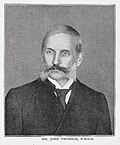File:Western facade of the Temple of Ongau Wat ILN0-1868-0201-0004.jpg

Original file (1,815 × 1,272 pixels, file size: 544 KB, MIME type: image/jpeg)
Captions
Captions
Summary
[edit]| John Thomson: Western facade of the Temple of Ongau Wat
( |
|||||||||||||||||||||
|---|---|---|---|---|---|---|---|---|---|---|---|---|---|---|---|---|---|---|---|---|---|
| Artist |
ILN staff after Mr. J. Thomson of Bangkok |
||||||||||||||||||||
| Author |
creator QS:P170,Q736862 |
||||||||||||||||||||
| Title |
Western facade of the Temple of Ongau Wat |
||||||||||||||||||||
| Object type |
print object_type QS:P31,Q11060274 |
||||||||||||||||||||
| Description |
English: Ruined Temples of Cambodia. Western facade of the Temple of Ongau Wat. Illustration for The Illustrated London News, 1 February 1868. Date: Saturday, Feb. 1, 1868, Publication: The Illustrated London News (London, England), Volume: 52, page 118, Issue: 1467, page 4. |
||||||||||||||||||||
| Depicted place | Angkor Wat | ||||||||||||||||||||
| Date |
1 February 1868 date QS:P571,+1868-02-01T00:00:00Z/11 |
||||||||||||||||||||
| Medium | Wood engraving | ||||||||||||||||||||
| Place of creation | London | ||||||||||||||||||||
| Source/Photographer | The Illustrated London News | ||||||||||||||||||||
| Other versions |
|
||||||||||||||||||||
Licensing
[edit]|
This is a faithful photographic reproduction of a two-dimensional, public domain work of art. The work of art itself is in the public domain for the following reason:
The official position taken by the Wikimedia Foundation is that "faithful reproductions of two-dimensional public domain works of art are public domain".
This photographic reproduction is therefore also considered to be in the public domain in the United States. In other jurisdictions, re-use of this content may be restricted; see Reuse of PD-Art photographs for details. | |||||
File history
Click on a date/time to view the file as it appeared at that time.
| Date/Time | Thumbnail | Dimensions | User | Comment | |
|---|---|---|---|---|---|
| current | 17:26, 27 February 2023 |  | 1,815 × 1,272 (544 KB) | Broichmore (talk | contribs) | {{Artwork |artist = ILN staff after Mr. J. Thompson of Bangkok |author = {{Creator:John Thomson}} |title = Western facade of the Temple of Ongau Wat |object type = print |description = {{en|1=Ruined Temples of Cambodia. Western facade of the Temple of Ongau Wat. Illustration for The Illustrated London News, 1 February 1868.<br /> Date: Saturday, Feb. 1, 1868, Publication: The Illustrated London News (London, England), Volume: 52, page 118, I... |
You cannot overwrite this file.
File usage on Commons
The following page uses this file:
File usage on other wikis
The following other wikis use this file:
- Usage on km.wikipedia.org
Metadata
This file contains additional information such as Exif metadata which may have been added by the digital camera, scanner, or software program used to create or digitize it. If the file has been modified from its original state, some details such as the timestamp may not fully reflect those of the original file. The timestamp is only as accurate as the clock in the camera, and it may be completely wrong.
| JPEG file comment | Created by AccuSoft Corp. |
|---|
